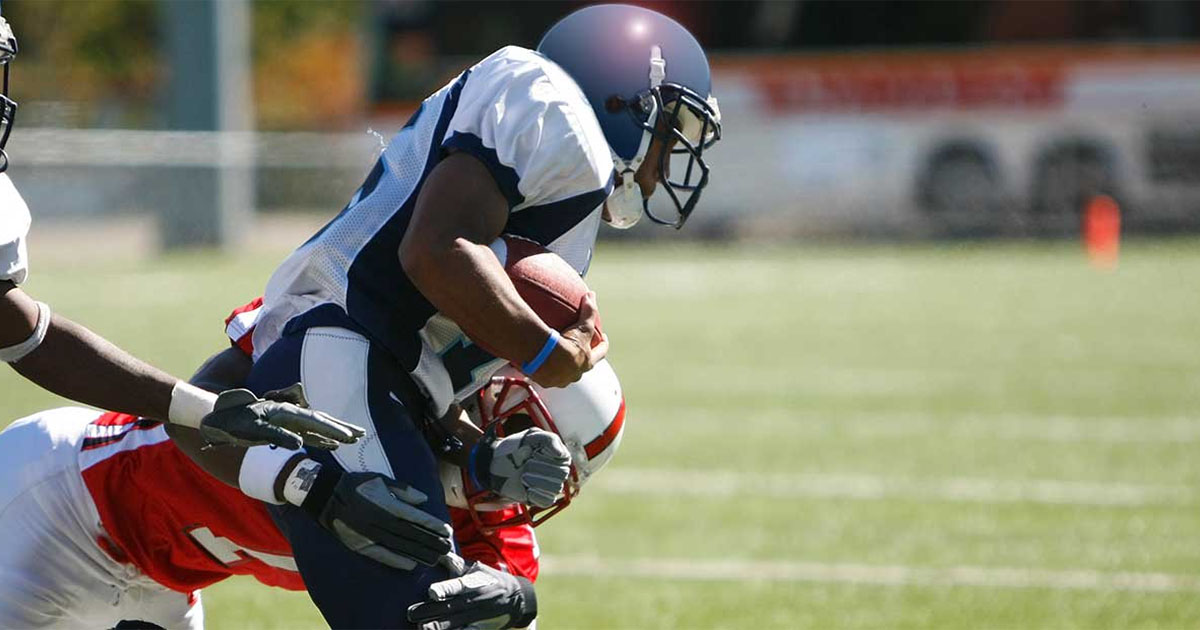Ankle Sprain Versus Ankle Fracture: What’s the Difference?
Advice to improve your movement, fitness, and overall health from the world's #1 in orthopedics.
Missteps happen to the best of us, whether on the stairs, while playing a sport or walking outside. About a million Americans visit the emergency room each year with ankle injuries—about 85 percent of which are ankle sprains.

In general, ankle sprains typically have a shorter recovery time than ankle fractures, also known as broken ankles, since they involve a break in the bone. But how do you know for sure which type of injury you have?
Here, HSS orthopedic surgeon Matthew Conti, MD, shares how to know which type of injury you might have, and what to do about it.
Signs and Symptoms of Sprain Versus Fracture
The key difference in knowing what might be a sprained ankle versus a broken ankle is in how the injury occurs. Ankle sprains happen when the foot gets twisted under the leg, tearing a ligament. This is called an inversion injury. Ankle sprains are common in sports like basketball, tennis and soccer, which require landing on one foot. They can also happen during everyday activities like walking on an uneven surface or stepping off a curb.
Ankle fractures usually happen when the inside of the ankle is twisted toward the ground, causing a break in a bone. This is called a rotational injury. Broken ankles are more common in impact injuries, where something or someone slammed into your ankle. They can also happen if you plant your foot firmly and then forcefully twist your body in the opposite direction. You can also have both an ankle fracture and sprain at the same time.
Either way, your first step should be RICE—rest, ice, compression and elevation—to help reduce swelling. Try to do this as soon as possible after your injury, even if it’s minor. Taking ibuprofen or other anti-inflammatory medications can also help reduce swelling, says Dr. Conti.
When to See a Doctor for Ankle Injury
There are a few criteria that signal it might be wise to seek medical help, says Dr. Conti. These include:
- pain in the part of the ankle where it bends
- tenderness on either side of the ankle
- inability to put weight on your foot immediately after the injury or walk four steps after some time passes
Meeting these criteria doesn’t mean your bone is broken, says Dr. Conti—and being able to walk on your foot doesn’t mean it’s not. Bruising, too, is common in both fractures and sprains. “When blood vessels break, they release blood under the skin, which can pool in your toes or heel. But that’s due to gravity—it doesn’t necessarily mean you broke your ankle,” he says.
Treatment for Ankle Injuries
When it comes to both ankle sprains and fractures, it’s important to see a specialist for treatment for a few reasons:
- Different injuries need different treatment plans. There may be something else going on in your ankle: A torn Achilles tendon, for instance, can look a lot like an ankle sprain, but it will need a different treatment plan to heal properly.
- Even if it’s just a sprain, proper care can speed healing and reduce the risk of future sprains. This usually involves wearing a special boot for a week or two and then doing four to six weeks of physical therapy, which can also help you get back to everyday activities faster.
- Healing properly is important. If it’s a fracture and the bones aren’t aligned properly, it could heal crooked, causing more problems down the road, including arthritis.



